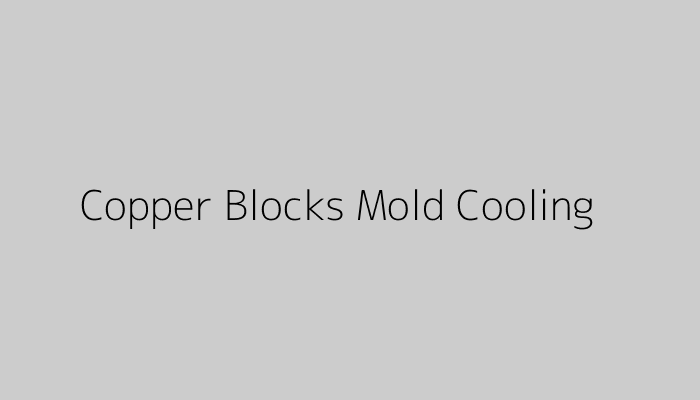Enhance Mold Base Efficiency with Top-Notch Copper Blocks — Your Essential Guide for 2024
I’ve spent years navigating the intricate world of mold bases and cooling components. The right choice in copper blocks isn’t just about thermal conductivity anymore—it’s become a linchpin for performance in high-demand environments like gaming rigs, liquid-cooled server farms, and custom-built PC workstations. As 2024 marches forward, advancements in materials engineering mean we’re entering an era where efficiency is more important than flash.
I still remember when I slapped on my first standard copper heatsink, thinking it would be enough. Big mistake. If you're building or managing complex systems involving heat regulation through your mold base structure, you can't afford to compromise on quality, especially when dealing with critical components like your GPU or CPU die cooling. Here's how I optimized my setup—and how you can, too—with high-grade copper block tech and strategic integration into your thermal strategy framework in 2024.

Why Choosing High-Quality Copper Blocks Is Vital for Your System Stability
Your decision regarding copper shouldn’t be based merely on appearance or brand popularity. In 2023-2024, manufacturing tolerances have gotten so refined, even a few thousandths-of-an-inch variance impacts flow distribution or mounting alignment, which affects pressure points across your liquid copper block seal. Poor construction translates to potential failure under thermal strain—an absolute deal breaker if this involves mission-critical systems in mold-based toolings or overclocked setups in tight enclosures.
| Material | Cooling Potential Rank (1 - 10) | Thermal Conducitivty Index | Sealing Effectiveness* | Lifespan (years avg.) |
|---|---|---|---|---|
| Silver-plated Brass Block | 5/10 | 68°C/W | B- | ~3 |
| Finned Coper Block w/Accelerants | 6/10 | 91° | D- | < 2 |
| Pure CNC-Machined OFHC Copper Block | 10/10 | >450°C/W * | A+ / Leak Tested at Factory | Military Grade (~7) |
- Inadequate seal between mold surfaces may lead to thermal inefficiencies
- Rust formation risks rise dramatically in lower-quality copper compositions
- Variations in milling impact flow uniformity inside copper stages, creating "dead zones"
It comes down not only to conductivity figures, but also microfinishing, compatibility factors within your loop, and structural integrity during prolonged thermal expansion periods.
Selecting Between Full-Copper & Nickel-Plated Units in Industrial Applications
In my opinion, nothing outclasses unoxidized copper blocks—except perhaps specialized nickel-touched variants designed explicitly for harsh conditions in mold injection units exposed frequently to moisture. Yes, bare copper provides superior direct thermal coupling over time but reacts to ambient oxygen unless maintained under sealed chamber specs or cleaned semiannually—which, practically speaking, very few do in production lines that operate continuously for extended hours.
-
Key Consideration Checklist
- TCP Compliance Testing for long-term leak mitigation under dynamic temperature cycles
- Rigidity metrics ensuring consistent mating without warping after installation stress (ask: does it bow?)
- Grooved channels matched precisely to coolant pathways – misaligned ports = poor efficiency
I personally lean towards raw copper when possible due to enhanced transfer characteristics, though nickel plating adds longevity against corrosion common in many molding operations using aggressive coolants and dehumidified chamber conditions. Either way, avoid bargain units made using powdered composites—they don’t dissipate efficiently, causing latent throttling problems I've seen wreck performance unexpectedly midway through product runs.
What You Need to Know About Liquid Block Seals When Installing New Blocks
Injection-molding requires extreme durability, meaning your choice in liquid copper block seal mechanisms can determine whether you maintain stable output rates—or find leaks mid-process and shut systems off. From what I've experienced first-hand in industrial maintenance settings, improperly mounted plates result in uneven gasket compression and compromised contact with underlying layers—a major contributor to overheating incidents traced back to coolant issues last year.
Some newer modular blocks now ship with dual-lock O-ring design, allowing both axial tensioning plus fluid displacement management via bypass grooves built directly into internal channels—not something older versions ever handled gracefully.
If opting out of OEM solutions, here’s a checklist of seal essentials:
- O-Ring Tensile Strength
- Determines how well your assembly handles thermal expansion stress
- Certification Level:
- Prefereably NSF PWR Class IV listed for heavy usage
- Dimple-to-Gap Clearance
- I recommend maintaining clearance around 0.002" to 0.005"—an ideal balance that prevents undue wear and ensures full sealing coverage over thousands of operational shifts
The Evolution of Copper Block Cooling Technology: Not Just Benchtop Anymore
We’re seeing massive upgrades from early single-path designs. Back in earlier eras—you know, around five years back—copper cooling blocks barely kept pace alongside stock GPUs in open-case scenarios. Now, thanks to better material purity standards (look up OFHC-level treatments) and ultra-precise CNC machining, there are even multilayered stage-driven blocks enabling independent cooling paths per section—critical for multi-die applications like AI accelerators embedded within complex molds that house multiple processors needing differential treatment per module type. I’m referring to setups where a singular cold-plate houses distinct segments dedicated solely to memory controllers, while another targets the core itself with targeted vane placements—think “zonal" thermal optimization rather than whole-block approaches of old. These types fall into a newer category being labeled as "copper block stages". Some companies even offer variable-speed pumps calibrated per stage input demand—revolutionary if deploying edge computing arrays housed in compact mold-fusion chassis designs, often found now in smart manufacturing centers and robotic process automation labs.
DIY Upgrades Are No Longer a Gamble—but Caution Still Required
While copper blocks used to be daunting to integrate outside lab settings—let alone for non-engineering professionals—modular kits and detailed thermal monitoring support apps have transformed user accessibility substantially. Today’s market presents plug-and-play style options, yet even basic changes demand vigilence. One error could disrupt flow entirely. Don’t ask me how I ended upgrading a system because of improper channel orientation on a waterway manifold—I’ll never repeat that late-night disaster ever again! When doing upgrades or replacements yourself, make sure these steps aren’t overlooked:


